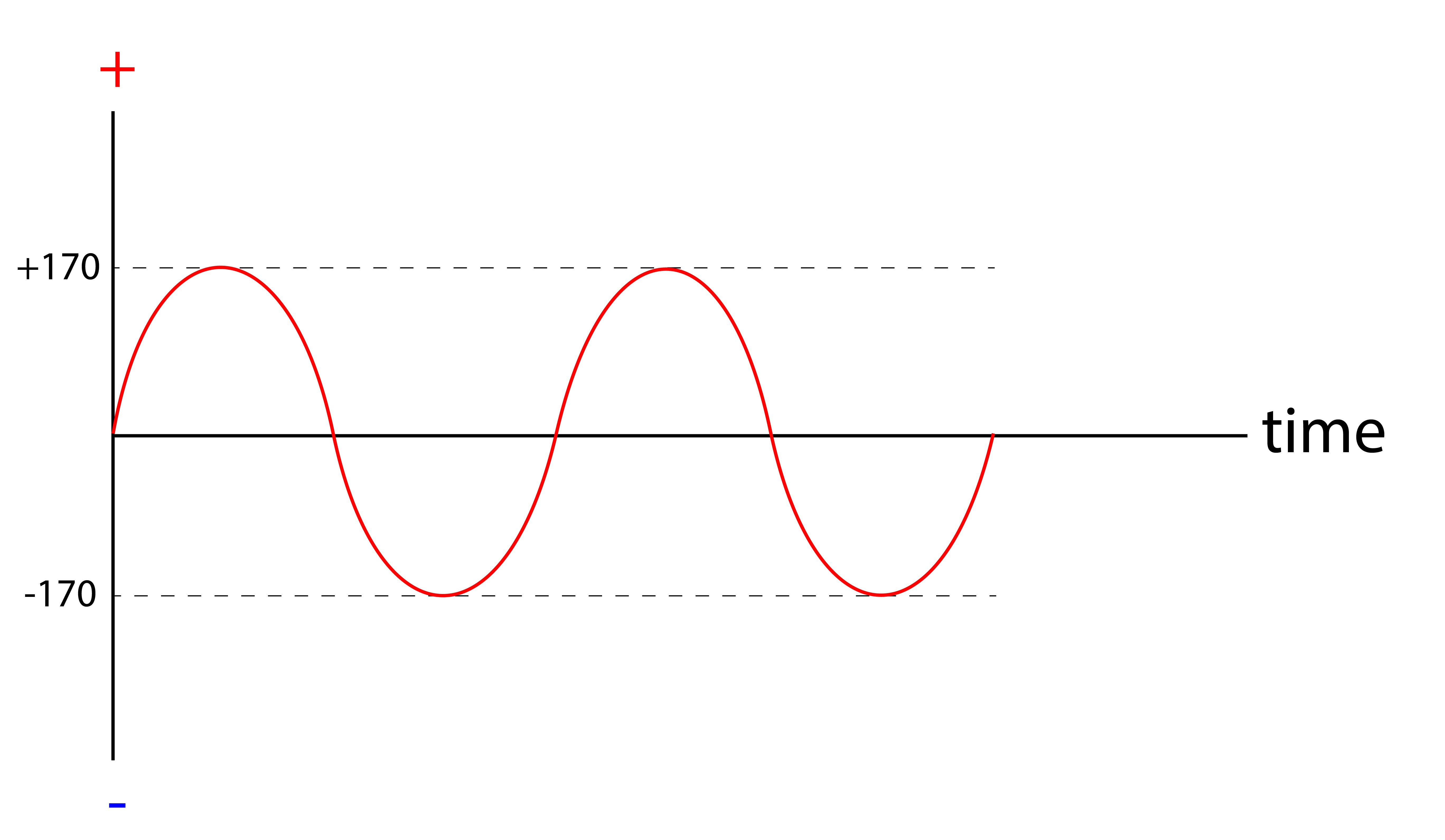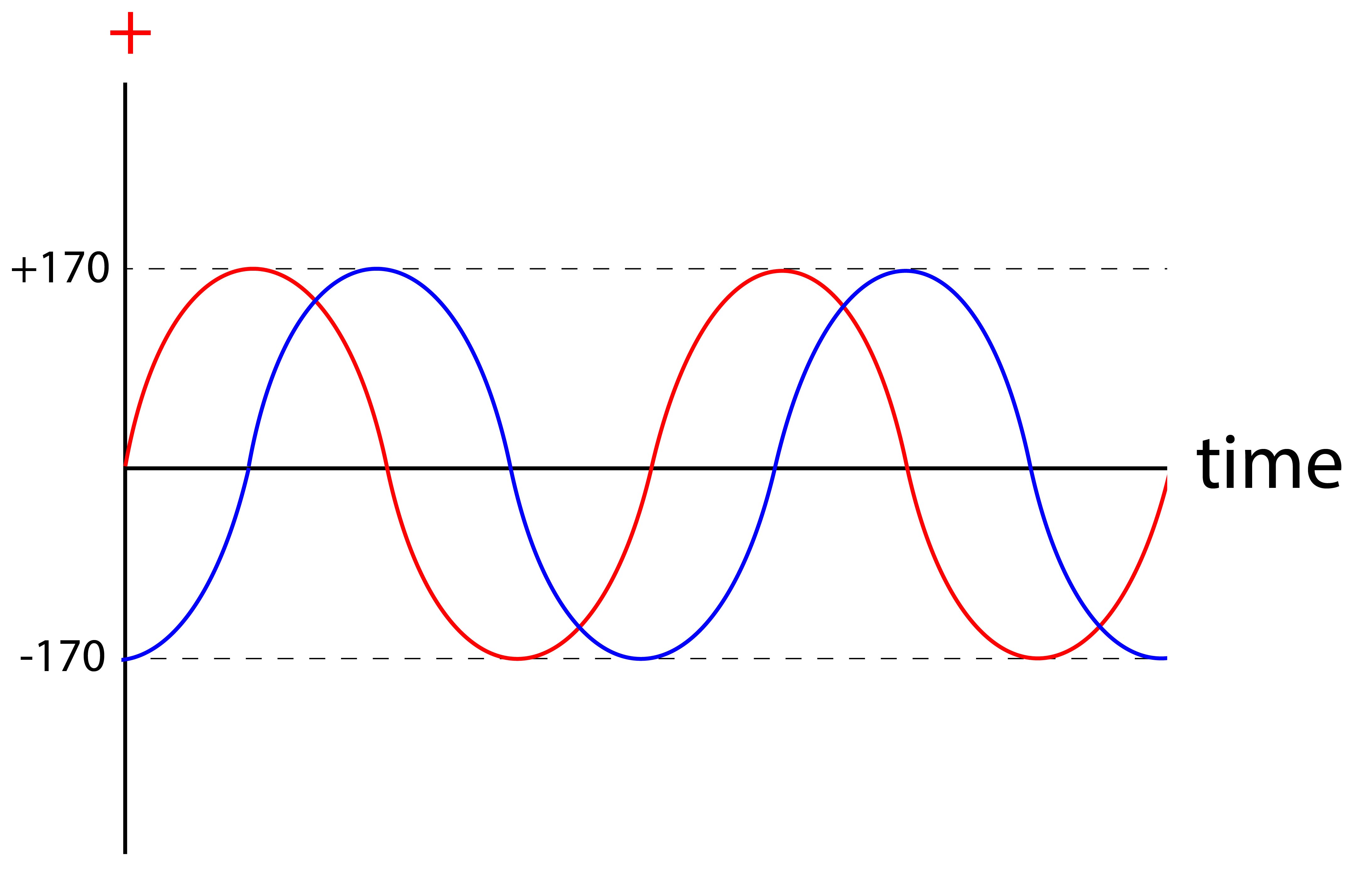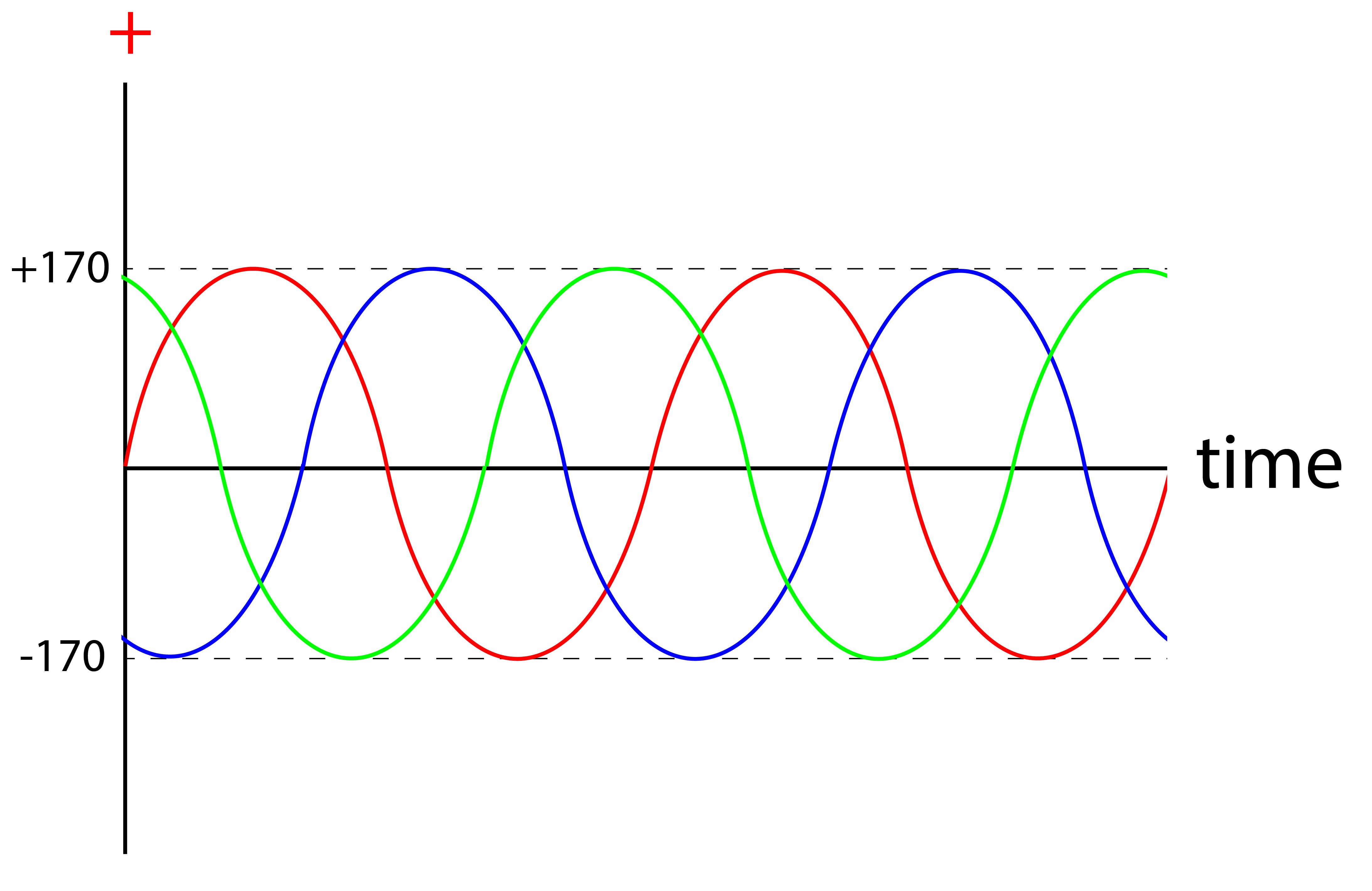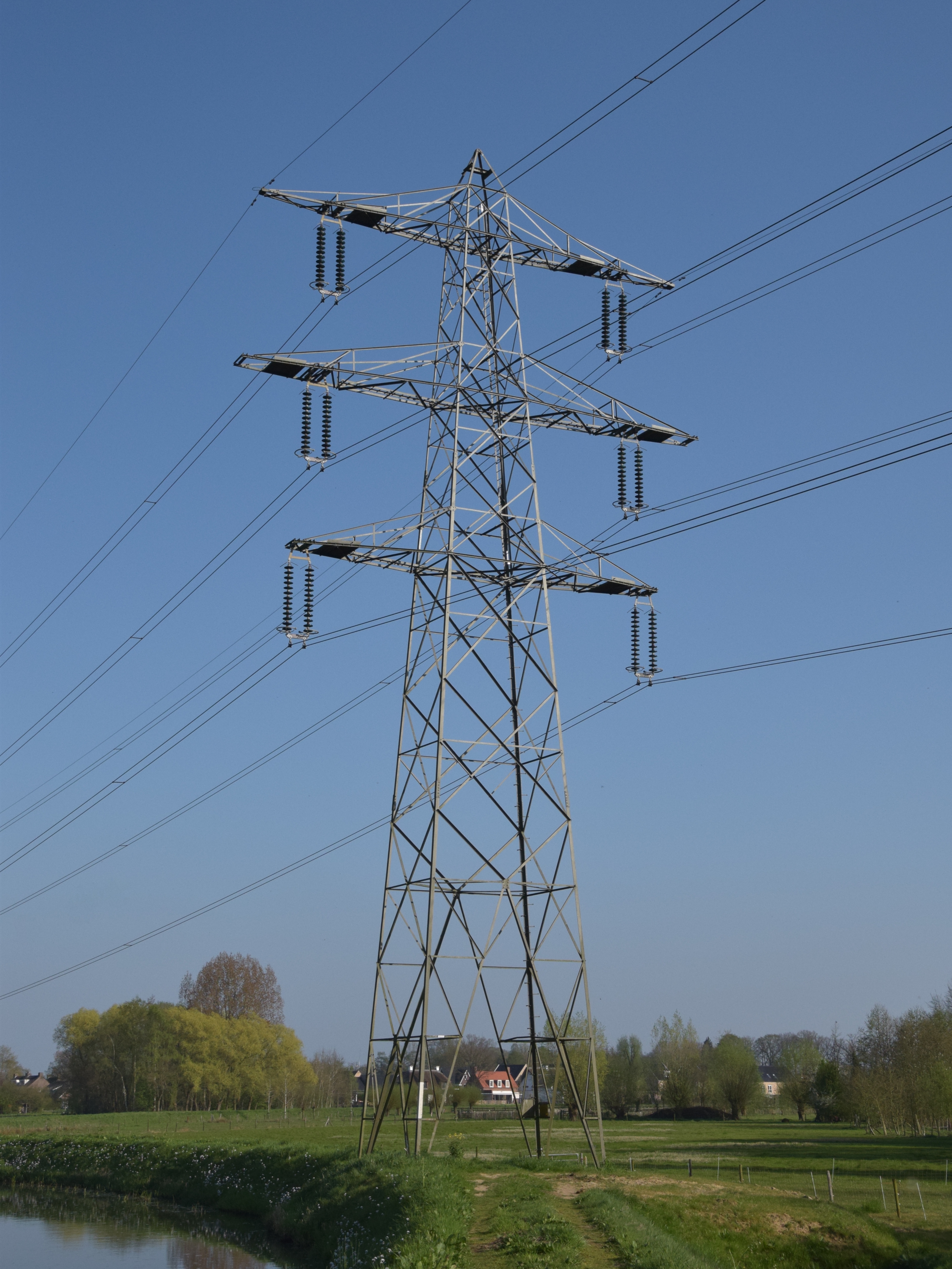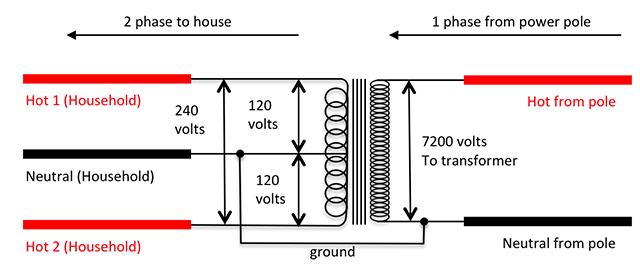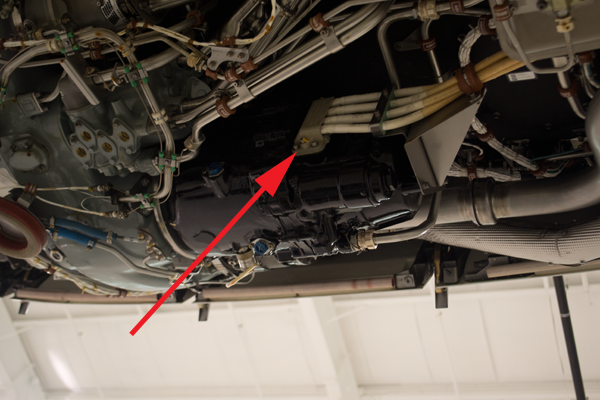Why do most large aircraft use 3-phase AC electrical power? It is for the same reason most houses use 2-phase power, it is safer and allows for smaller wires. Chances are the power coming to your house is actually a single phase that has been split by a transformer, but from the perspective of your home circuit breaker or fuse box, it appears in two phases with a neutral wire in the middle. If your airplane has 3-phase AC generators, each generator will probably have four large cables: three phases and a neutral wire that plays that part for all three phases.
— James Albright

Updated:
2022-06-21
But why not four phases? Five or more? Understanding this will help the next time you are dealing with an aircraft electrical problem on less than all three phases.

1
Theory
What is electricity?
You really can't understand 3-phase electrical power until you understand a few of the concepts that come before it. The first of which is the primal question of electricity itself.
The normal way of explaining electricity is to rub a balloon on some wool and then have that balloon stand your hair on end. See? Plain as day!
Electricity requires a basic understanding of the atom, that very small building block of everything around us which is composed of even smaller things: protons, neutrons, and electrons. These atoms are like miniature solar systems with the protons and neutrons in the middle and the electrons orbiting about in little orbits. Some atoms can be coaxed into giving up and receiving extra electrons. The movement of electrons from one atom to the next is electricity. You can make use of this movement to do work. More about this: (What is) Electricity.
Alternating current
A typical household appliance will use single-phase AC rated at 120 volts. If you had an extremely fast voltmeter, you could see the voltage go up to a positive value well beyond +120 volts, then down to zero and further down well below -120 volts. We have instruments called oscilloscopes that do this for us and graph the results, as shown here. As it turns out, the voltage peaks are around +170 and -170. Why?
The "effective" voltage that does the actual work isn't the peak voltage, it isn't even the average voltage. It turns out to be what is called the "Root-Mean-Squared" or RMS voltage. It has to do with the area under the curve. You compute RMS voltage by dividing the peak voltage by the square root of 2.
In the case of our North American 120V household current:
Single-phase
You might think that if the current is both +170 and -170, they would cancel out and you would end up at zero. But since the voltages happen at different times, that isn't true. In fact, if you hook up a voltmeter, you see something very close to 120 VAC.
In actual practice, single phase systems require larger wires than multi-phased systems, for reasons we shall soon see.
2-phase
In theory, 2-phase circuits provide a more constant combined power than single-phase, but the voltage still pulsates twice through zero. You still end up getting more power with less peak voltage, so the wires don't need to be as thick.
In actual practice, 2-phase AC power was used for a time with the phases differing by one-quarter cycle, not the half postulated by theory. This allowed for self starting motors since you never had a time when both phases were at zero volts.
Some electricians say most houses in North America are wired with two phases and others will say no, we have a single-phase that is "tapped" in the middle to give us 240V from one side to the other or 120V from the center tap to either side. I think it is mostly a matter of semantics. The voltage comes to us in three phases and we get one of those wired into our houses. Why three phases?
3-phase
By adding a third phase and offsetting each phase by 120° (a third of the full 360°), you end up with power that is more stable and has more narrow peaks and valleys. You never end up with 0 volts and the minimum value will be much higher. Since you can transmit more power at lower voltages, the size of the wires can be smaller and the system becomes safer.
3-phase systems may have a neutral wire. A neutral wire allows the 3-phase system to use a higher voltage while still supporting lower-voltage single-phase loads. In high-voltage distribution situations, it is common not to have a neutral wire as the loads can simply be connected between phases (phase-phase connection).
3-phase has properties that make it very desirable in electric power systems:
- The phase currents tend to cancel out one another, summing to zero in the case of a linear balanced load. This makes it possible to reduce the size of the neutral conductor; all the phase conductors carry the same current and so can be the same size, for a balanced load.
- Power transfer into a linear balanced load is constant, which helps to reduce generator and motor vibrations.
- 3-phase systems can produce a magnetic field that rotates in a specified direction, which simplifies the design of electric motors.
Four- or more-phases
If two is better than one and three is better than two, why not four or more? The answer is that each additional phase requires additional hardware, and after three you seem to have diminishing returns.
2
Household 2-phase power example
In a typical 120 Volt household, electricity comes from the power company in a single phase and high voltage. A transformer takes that power and steps it down to 240 volts with a neutral tap in the middle. Taking power from the two ends results in 240 volts for high demand systems, such as a clothes dryer. Taking power from the center neutral top to either phase results in 120 volts for most household needs.
Note: some electricians become animated / agitated on this topic, correctly arguing that the 2-phases in your house is actually 1-phase from the 3-phases delivered to your neighborhood and that 1-phase is split into two.
3
Aircraft 3-phase power example
With an aircraft AC generator you will commonly have three outputs, one for each phase, and a common neutral. Unlike the household example, the voltages are not commonly combined. High demand aircraft systems will use all 3-phases for more power than a single phase can provide. A high demand motor, for example, may have three sets of windings to take advantage of all 3-phases.

